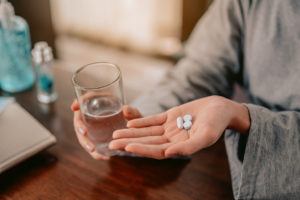According to the National Institute on Drug Abuse, teen drug abuse has become a serious problem in the United States. Every year, thousands of teens die from drug overdoses, and many more suffer from the devastating effects of drug abuse. Drug abuse can lead to addiction, a chronic, relapsing brain disease characterized by the behavior of compulsively seeking drugs and using them, despite their harmful consequences.
The good news is that teen drug abuse and addiction are both preventable. There are many things that parents, teachers, and other adults can do to help prevent this catastrophe. One of the most important things adults can do is talk to teens about the dangers of drug abuse and the importance of staying drug-free.
Substance Abuse Amongst Youths
Substance abuse amongst the youth has been on a constant rise in recent years. Various studies and surveys have shown that the number of young people indulging in substance abuse is increasing daily. Substance abuse can be defined as the regular, excessive, and harmful use of psychoactive substances like alcohol and drugs. It can have severe implications for the health and well-being of the individual, even leading to death in extreme cases.
Young people who experiment with drugs are likelier to become addicted as adults. In addition, risky behavior tends to spike during the teenage years. Teens may be predisposed to drug use due to mental health conditions or exposure to certain substances.
The following are some significant teen substance abuse statistics, according to National Center for Drug Abuse Statistics:
- About 8.33% of American teenagers (12–17) have reported using illegal drugs in the past month. This amounts to about 2.08 million of all young people in the US.
- On average, 83.88 percent of young individuals smoke marijuana monthly.
- 591,000 of those between the ages of 12 and 17 reported using an illegal substance other than marijuana in the prior month.
- 8.7 percent of eighth graders said they had used illegal drugs in the previous month.
- About one-quarter of 8th graders (21.3%) report trying drugs.
- Almost half of all high school seniors (46.6%) reported taking illegal drugs.
- An estimated 11.89 million Americans aged 18 to 25 used illicit substances the month before the survey’s administration.
- The overdose rate of young adults in the United States (15-24) due to illegal narcotics stands at 4,777 individuals in a year.
- Overdose deaths account for 11.2% of all deaths among people aged 15–24.
The main reasons for substance abuse amongst the youth are peer pressure, easy availability of drugs and alcohol, curiosity, and the need to fit in. However, peer pressure remains the critical reason.
Most young individuals see their friends or older siblings indulging in a particular drug and feel more comfortable doing it. They think that it makes them look cool and grown up. However, they do not realize the harmful effects of substance abuse and how it can ruin their lives.
Youth Alcohol Abuse
In the United States, alcohol is the most commonly used and abused drug among young people. This presents enormous safety and health risks for the nation’s upcoming generation. Underage drinking is precarious for all—regardless of age or drinking status.
According to the 2020 National Survey on Drug Usage and Health (NSDUH), around 6.03 million American kids (those between the ages of 12 and 20) report current alcohol use. This is despite a legal ban on alcohol use for 16% of people between the ages of 12 and 20. There was a steady decline in drinking, binge, and heavy drinking among people aged 12–20 beginning in 2011.
Below are some essential statistics regarding youth alcohol abuse in the US:
- On average, young people in the US begin drinking at age 13.
- Each day, approximately 5,000 kids in the United States aged 15 or younger take their first drink of alcohol.
- More than 7 million American kids aged 12–17 have abused alcohol in the past year—nearly 20% of all adolescents.
- In 2020, there were 189,000 emergency room visits by persons aged 12–20 for injuries and other conditions linked to alcohol abuse.
- Alcohol use by youth increases the risk of developing chronic problems such as addiction, liver disease, heart disease, and various cancers.
- Drinking alcohol also increases the risk of car crashes, drowning incidents, and other accidental injuries.
- Youth who drink alcohol are more likely to engage in risky sexual behaviors, leading to unplanned pregnancies and sexually transmitted diseases.
- Youth who drink alcohol are more likely to experience academic problems, miss school, and engage in violent behaviors.
Youth Drug Use
A 2019 NSDUH Survey reported that an estimated 27.6 million Americans aged 12 or older used an illicit drug within the month leading to the study. This represents 10.6% of the population aged 12 or older. The survey also revealed the following:
- The most common drugs abused by youths were marijuana/hashish (5.8%), cocaine (1.6%), and hallucinogens (1.2%).
- Marijuana use has been steadily increasing over the past decade, with 14.6% of the population aged 12 or older reporting its use in the past month in 2019, up from 10.5% in 2010.
- The use of cocaine has remained relatively stable over the past decade, with 1.6% of the population aged 12 or older reporting use in the past month in 2019, compared to 1.5% in 2010.
- The use of hallucinogens has decreased slightly over the past decade, with 1.2% of the population aged 12 or older reporting their use in the past month in 2019, down from 1.4% in 2010.
Youth Substance Abuse in CA
According to the National Center for Drug Abuse Statistics, drug usage amongst California’s youths is 24.46 percentage points higher than that of their peers nationally. The researchers also report the following about California’s young population:
- Around 314,000 people aged 12-17 reported using illegal drugs sometime in the past month.
- Roughly 85% of these folks have smoked marijuana within the past month.
- 15.75 percent of high school seniors report using marijuana within the past year.
- Approximately 0.53 percent of respondents indicated they had used cocaine within the prior 12 months.
- There is a 0. 10% usage rate of methamphetamine.
- A rate of up to 0.02% of those using heroin was seen.
- Only 2.67 percent freely admit to misusing prescription medicines.
- 8.85% of those aged 12-17 reported drinking within the preceding month.
- In the past 30 days, an estimated 1.69 million Americans aged 18–25 reported using illicit drugs.
- There is an 18.24% increase in drug experimentation amongst Californians aged 18-25 compared to the rest of the country.
Are You Looking for a Substance Abuse Treatment Center Near Lancaster, CA?
It is hard to deal with substance use disorder and even traumatizing to see your child struggling with drug addiction. If you or someone you love is struggling with drug abuse, getting help as soon as possible is very critical. It is important to note that drug addiction is a treatable disease, and many resources available can help with recovery.
The Bellagio Rehabilitation Treatment Center in Lancaster, CA, offers comprehensive treatment that can help you or your loved one on the road to recovery. Contact us today to learn more about our drug abuse and addiction recovery programs.




